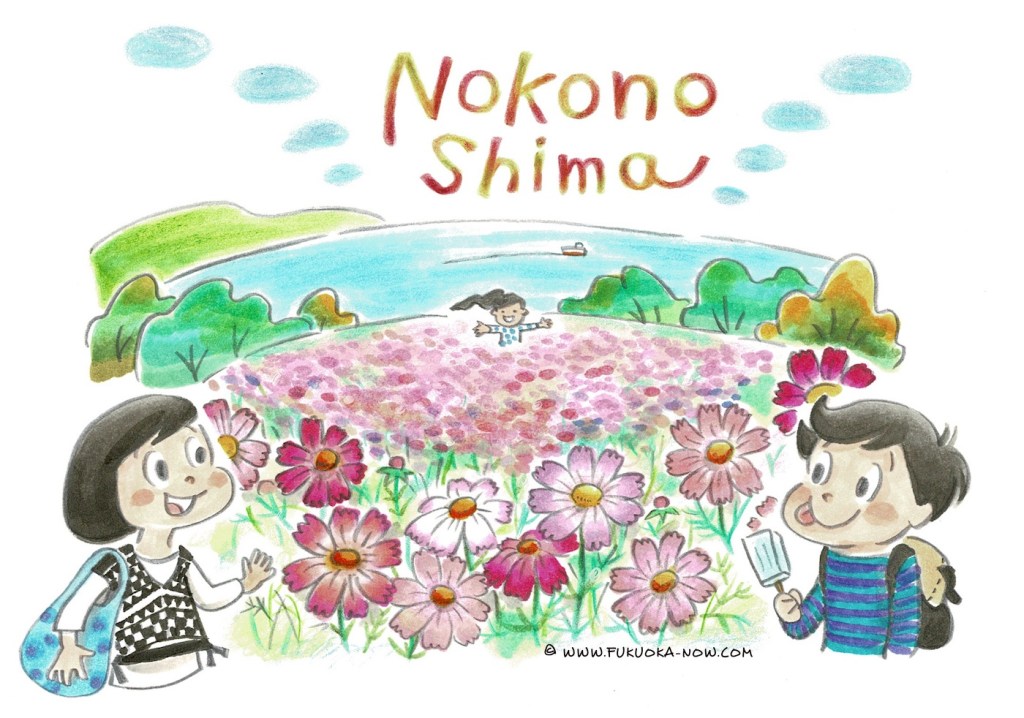Nokonoshima is known for the many different flowers that bloom there throughout the year. In past articles, we have introduced the flowers that bloom from spring to early summer, like nanohana (rapeseed), but this time we would like to shine the spotlight on another mainstay of Nokonoshima: its cosmos. At Nokonoshima Island Park in the northern part of the island, about 500,000 cosmos flowers burst into bloom every year when the season comes around. With the blue sea and sky as a backdrop, the sight of the cosmos in varying shades of pink and white swaying in the wind is breathtaking.

The early cosmos start blooming in early October, and the late cosmos bloom until early November, so you can enjoy them for a relatively long time. Seasonal flowers are planted throughout the park, so you can enjoy dahlias and salvias along with the cosmos. After the cosmos season ends, you can see the vibrant fall foliage, and winter flowers like sasanqua and camellia continue to bloom. Later, in January and February, you can enjoy the scenery of Japanese narcissus blooming all over the place.
Nokonoshima is also home to the Nokonoshima Museum, which has a collection of materials associated with Nanmei and Shoyo Kamei, a father-and-son duo who were featured in a previous article. The museum has a wealth of valuable materials related to the surrounding sea, and since it is located on a hillside, it also affords a panoramic view of Hakata Bay. In one corner of the garden, you can view the remains of an old Noko ware kiln, which used to serve as an official kiln for the Fukuoka Domain. The kiln only operated for 20 years in the middle of the Edo period (late 18th century), and the pieces it produced are known as “Phantom Nokoyaki” because so few of them remain.
Shirahige Shrine, located on the southern end of the island, enshrines the guardian deity of Nokonoshima. It is said to have been founded in the Nara period (710-794), and it originally enshrined a huge stone that still exists near the top of Mt. Noko. The imposing main hall and worship hall were built in the Edo period and are designated as tangible cultural properties of Fukuoka City. The annual Okunchi festival held on October 9 still retains the atmosphere of years gone past, and it has been designated as a folk cultural property of Fukuoka City.









